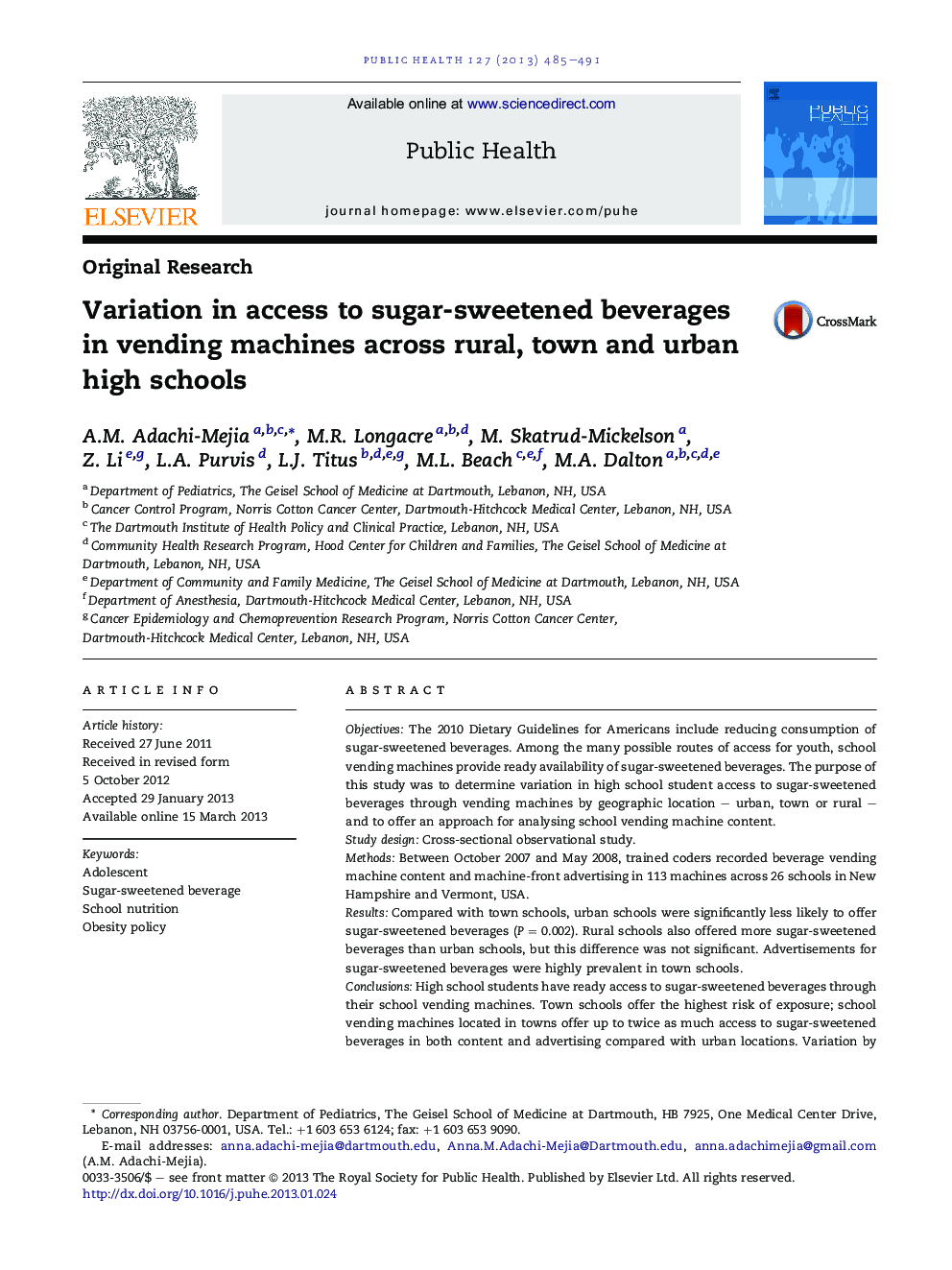| Article ID | Journal | Published Year | Pages | File Type |
|---|---|---|---|---|
| 1087847 | Public Health | 2013 | 7 Pages |
ObjectivesThe 2010 Dietary Guidelines for Americans include reducing consumption of sugar-sweetened beverages. Among the many possible routes of access for youth, school vending machines provide ready availability of sugar-sweetened beverages. The purpose of this study was to determine variation in high school student access to sugar-sweetened beverages through vending machines by geographic location – urban, town or rural – and to offer an approach for analysing school vending machine content.Study designCross-sectional observational study.MethodsBetween October 2007 and May 2008, trained coders recorded beverage vending machine content and machine-front advertising in 113 machines across 26 schools in New Hampshire and Vermont, USA.ResultsCompared with town schools, urban schools were significantly less likely to offer sugar-sweetened beverages (P = 0.002). Rural schools also offered more sugar-sweetened beverages than urban schools, but this difference was not significant. Advertisements for sugar-sweetened beverages were highly prevalent in town schools.ConclusionsHigh school students have ready access to sugar-sweetened beverages through their school vending machines. Town schools offer the highest risk of exposure; school vending machines located in towns offer up to twice as much access to sugar-sweetened beverages in both content and advertising compared with urban locations. Variation by geographic region suggests that healthier environments are possible and some schools can lead as inspirational role models.
